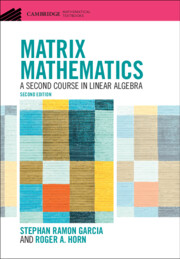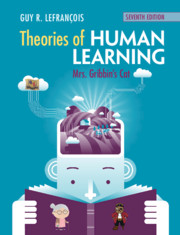Refine search
Actions for selected content:
36846 results in Cambridge Textbooks
Chapter 15 - Farewell
-
- Book:
- Principles of Computational Modelling in Neuroscience
- Published online:
- 07 October 2023
- Print publication:
- 05 October 2023, pp 466-471
-
- Chapter
- Export citation
Chapter 13 - Modelling Measurements and Stimulation
-
- Book:
- Principles of Computational Modelling in Neuroscience
- Published online:
- 07 October 2023
- Print publication:
- 05 October 2023, pp 385-430
-
- Chapter
- Export citation
Chapter 1 - Introduction
-
- Book:
- Principles of Computational Modelling in Neuroscience
- Published online:
- 07 October 2023
- Print publication:
- 05 October 2023, pp 1-11
-
- Chapter
- Export citation
Chapter 11 - Plasticity
-
- Book:
- Principles of Computational Modelling in Neuroscience
- Published online:
- 07 October 2023
- Print publication:
- 05 October 2023, pp 302-337
-
- Chapter
- Export citation
Chapter 8 - Simplified Models of the Neuron
-
- Book:
- Principles of Computational Modelling in Neuroscience
- Published online:
- 07 October 2023
- Print publication:
- 05 October 2023, pp 210-244
-
- Chapter
- Export citation
Acknowledgements
-
- Book:
- Principles of Computational Modelling in Neuroscience
- Published online:
- 07 October 2023
- Print publication:
- 05 October 2023, pp xi-xi
-
- Chapter
- Export citation
Reviews
-
- Book:
- Principles of Computational Modelling in Neuroscience
- Published online:
- 07 October 2023
- Print publication:
- 05 October 2023, pp ii-ii
-
- Chapter
- Export citation
Chapter 5 - Modelling Neurons over Space and Time
-
- Book:
- Principles of Computational Modelling in Neuroscience
- Published online:
- 07 October 2023
- Print publication:
- 05 October 2023, pp 103-144
-
- Chapter
- Export citation
Contents
-
- Book:
- Principles of Computational Modelling in Neuroscience
- Published online:
- 07 October 2023
- Print publication:
- 05 October 2023, pp v-viii
-
- Chapter
- Export citation
Chapter 3 - The Hodgkin–Huxley Model of the Action Potential
-
- Book:
- Principles of Computational Modelling in Neuroscience
- Published online:
- 07 October 2023
- Print publication:
- 05 October 2023, pp 40-62
-
- Chapter
- Export citation
Chapter 4 - Models of Active Ion Channels
-
- Book:
- Principles of Computational Modelling in Neuroscience
- Published online:
- 07 October 2023
- Print publication:
- 05 October 2023, pp 63-102
-
- Chapter
- Export citation

Matrix Mathematics
- A Second Course in Linear Algebra
-
- Published online:
- 29 September 2023
- Print publication:
- 25 May 2023
-
- Textbook
- Export citation

Theories of Human Learning
- Mrs Gribbin's Cat
-
- Published online:
- 29 September 2023
- Print publication:
- 24 October 2019
-
- Textbook
- Export citation
4 - Natural Disturbance
-
- Book:
- Wetland Ecology
- Published online:
- 14 September 2023
- Print publication:
- 28 September 2023, pp 130-167
-
- Chapter
- Export citation
3 - Common Discrete Random Variables
- from Part II - Discrete Random Variables
-
- Book:
- Introduction to Probability for Computing
- Published online:
- 12 September 2023
- Print publication:
- 28 September 2023, pp 44-57
-
- Chapter
- Export citation
5 - Elasticities of Arts Demand and Their Policy Implications
- from Part II - The Microeconomics of Demand and Supply
-
- Book:
- The Economics of Art and Culture
- Published online:
- 24 November 2023
- Print publication:
- 28 September 2023, pp 64-80
-
- Chapter
- Export citation
14 - The Arts as a Profession
- from Part V - Art, Economy, and Society
-
- Book:
- The Economics of Art and Culture
- Published online:
- 24 November 2023
- Print publication:
- 28 September 2023, pp 209-227
-
- Chapter
- Export citation
15 - Estimators for Mean and Variance
- from Part V - Statistical Inference
-
- Book:
- Introduction to Probability for Computing
- Published online:
- 12 September 2023
- Print publication:
- 28 September 2023, pp 255-264
-
- Chapter
- Export citation
2 - Flooding
-
- Book:
- Wetland Ecology
- Published online:
- 14 September 2023
- Print publication:
- 28 September 2023, pp 50-93
-
- Chapter
- Export citation
Part V - Art, Economy, and Society
-
- Book:
- The Economics of Art and Culture
- Published online:
- 24 November 2023
- Print publication:
- 28 September 2023, pp 207-270
-
- Chapter
- Export citation
